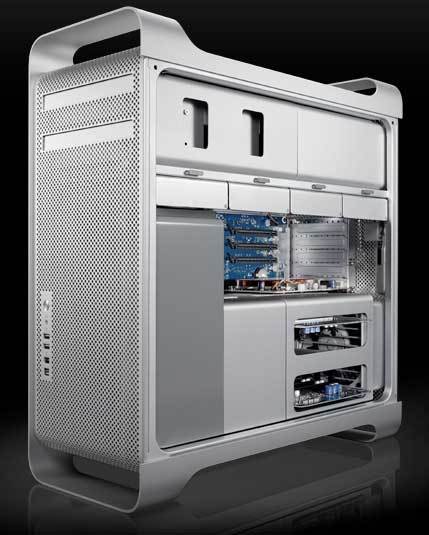Disclaimer: I barely know what I’m talking about. Really, barely.
In light of the recent “What and when is the new Mac Pro?” -news, here’s my recent Mac Pro story.
Some five years ago I bought this hunk of aluminum (not exactly sure why) from a graphics designer / video editor, who at the time figured his trusted workhorse, a 2007 Mac Pro, had reached EOL. He had pretty much maxed out everything on the beast, RAM, HDD/SSD’s, GPU’s etc, except Apple was giving him no more love in OS upgrades. As he demanded the latest from Adobe Premiere, Final Cut Pro, Photoshop etc, OS X Lion (?) was no longer going to do it for him. So I presented the gentleman $200 in cash and lugged the heavy weight off of his hands and stored it in a closet until just a few weeks ago. Again, not sure why I bought it in the first place, maybe I felt bad for the dying metal.

These 2006-2007 Mac Pro’s came with a 32-bit EFI, but with 64-bit CPU architecture (Intel Xeons mind you), hence the problem with more recent 64-bit OS X upgrades. Luckily, the inventive hackintosh community kept playing ball, and not too long ago these early Mac Pro’s were finally upgradeable to OS X El Capitan – not the latest Mac OS, but their EOL effectively got pushed back at least a few more years.
While I’m not a huge fan of OS X, or ‘MacOS’, I can tolerate it. But after a few days of using MacOS, I eventually feel the need to get my hands dirty with Linux. This April was the 10-yr mark for this tank, so as an anniversary present, I decided to give it some Linux Love. After some hours on the googles, I came across this website with plenty of different distro ISO images ready to be installed on a 32-bit EFI running on a 64-bit system.
I have a stock GTX 660 Ti GPU that works well enough with El Capitan’s own drivers, but on Ubuntu 16.04LTS I had to use Nvidia drivers from way back when. Mouse clicks were not working in Gnome on Ubuntu (Unity 7 was ok) and as Gnome is a must for me, Ubuntu was a no-go. Also, the old Nvidia drivers gave me a headache on a few Steam games as well – though I do see the irony, the attempt to play relatively recent PC games on Linux, which in turn is running on a ten-year-old Mac…
Next in line was to try Arch Linux, but the standard ISO would not boot. I’ve run Arch on a 2013/14 MacBook Pro quite successfully, so needless to say I was quite disappointed with my shortcomings with Arch on the Tower Of Aluminum (sorry, ‘aluminium’ for @sil and @jonobacon). So the trick was to compile a short program in C – again, not my handywork, as I know about C and code, as much as a turtle knows about aerodynamics (though I have to say, turtles are in their ‘gear-up’ configuration quite aerodynamic, but I digress…) – that allows your standard 64-bit ISO to be converted so a 32-EFI will boot it.
Tadaa! Arch boots. Go through the laborious process of CLI installation (ok, copy-paste via SSH but still) only to find out the bootloader got repeatedly screwed up during installation. This all more than likely due to user error, as is often the case with Arch, but in the end, The Silver Block shan’t get Arch.
Finally, Debian Jessie. Debian should fit the bill, as it is after all the granddad of distros, so running on a museum-grade Mac should be its perfect cup of tea. Though I had to give the installation a few tries, as the process got interrupted with error codes at least four times, in the end, it did install. And of course, within 15 minutes I had to upgrade it all to Debian testing, i.e. “Stretch”. Why? I don’t know, because it’s available?
-
Nvidia (vs. 340) works fine so far. Steam to follow. I have a feeling Steam on Debian Testing will be a bit more PITA than Ubuntu.
-
Gnome works perfectly. Love 3.22 on this thing. Except enabling User Themes crashes it.
-
Every so often a package I try to install prompts with a conflict – welcome to Debian Testing?
-
A server-grade Mac Pro running Linux works really well as a heater.
What’s your recent old-metal-rescue-project?


 Almost Vegas odds.
Almost Vegas odds.